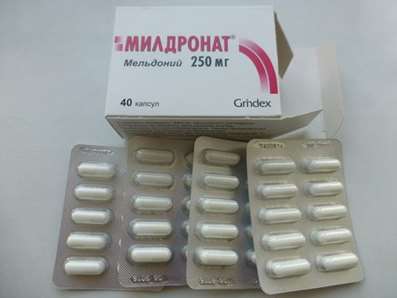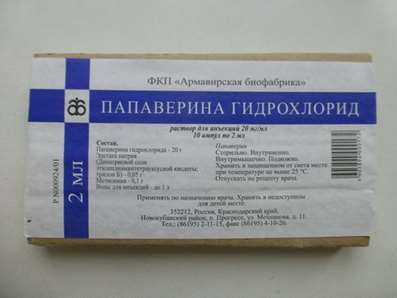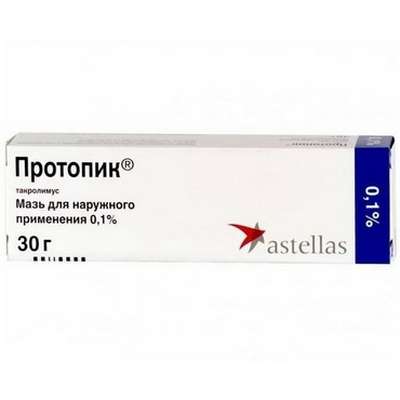Instruction for use: Xalatan
I want this, give me price
Dosage Form: eye drops
Active substance: Latanoprost*
ATX
S01EE01 Latanoprost
Pharmacotherapeutic groups:
Antiglaucoma means - prostaglandin F2α analogue synthetic [Prostaglandins, thromboxanes, leukotrienes and their antagonists]
Ophthalmic agents
The nosological classification (ICD-10)
H40.1 Primary open angle glaucoma: Open-angle glaucoma; Open angle glaucoma; Primary glaucoma; Pseudoexfoliation glaucoma; Increased IOP
Composition and release form
Eye drops 1 ml
Latanoprost 50 μg
Auxiliary substances: sodium chloride; Sodium dihydrogen phosphate (monohydrate); Sodium hydrophosphate (anhydrous); Benzalkonium chloride; water for injections
In the bottles-droppers of 2.5 ml; In a pack of cardboard 1 or 3 bottles.
Description of dosage form
Colorless transparent liquid.
Pharmacology
Mode of action - antiglaucoma.
Pharmacodynamics
Latanoprost, an analogue of PGF2α, is a selective agonist of FP receptors and reduces intraocular pressure (IOP) by increasing the outflow of aqueous humor, mainly by the uveoscleral route, and also through the trabecular network. Decrease in IOP begins approximately 3-4 hours after the administration of the drug, the maximum effect is observed after 8-12 hours, the effect is maintained for at least 24 hours.
It has been established that latanoprost has no significant effect on the production of aqueous humor and the hemato-ophthalmic barrier.
When used in therapeutic doses, latanoprost does not have a significant pharmacological effect on SSS and respiratory system.
Pharmacokinetics
Suction. Latanoprost, being a prodrug form, is absorbed through the cornea, where its hydrolysis occurs to a biologically active acid. Concentration in watery moisture reaches a maximum about 2 hours after topical application.
Distribution. Vd is (0.16 ± 0.02) l / kg. Latanoprost acid is determined in aqueous humor during the first 4 hours, and in plasma only within the first hour after topical application.
Metabolism. Latanoprost, being a prodrug form, undergoes hydrolysis in the cornea under the action of esterases to form a biologically active acid. Latanoprost acid, entering the systemic bloodstream, is metabolized, mainly in the liver, by beta-oxidation of fatty acids to form 1,2-dinor- and 1,2,3,4-tetranor metabolites.
Excretion. Latanoprost acid is rapidly removed from the plasma (T1 / 2 = 17 min). The system clearance is approximately 7 ml / min / kg. After beta-oxidation in the liver, metabolites are excreted mainly by the kidneys (after local application with urine, approximately 88% of the administered dose is excreted).
Indications for the Xalatan
Decreased elevated IOP in patients with open-angle glaucoma or an elevated ophthalmotonus.
Contraindications
Hypersensitivity to latanoprost or other components of the drug;
Age to 18 years.
Carefully:
Aphakia, pseudo-aphakia with a rupture of the posterior capsule of the lens;
Patients with known risk factors for macular edema (in the treatment with latanoprost, cases of development of macular edema, including cystoid edema); Inflammatory, neovascular or congenital glaucoma (due to a lack of sufficient experience in the use of the drug).
Application in pregnancy and breastfeeding
Adequate controlled studies in pregnant women have not been conducted. The drug should be prescribed during pregnancy only in those cases where the potential benefit to the mother exceeds the possible risk to the fetus.
Latanoprost and its metabolites can be excreted into breast milk, so during breastfeeding the drug should be used with caution.
Side effects
The following undesirable reactions related to the use of the drug were recorded:
From the side of the organ of vision: irritation of the eyes (burning sensation, sensation of sand in the eyes, itching, tingling and sensation of foreign body); Blepharitis; Hyperemia of the conjunctiva; Pain in the eyes; Increased pigmentation of the iris; Transient point erosions of the epithelium, edema of the eyelids, edema and erosion of the cornea; conjunctivitis; Lengthening, thickening, increased number and increased pigmentation of eyelashes and hair follicles; Changing the direction of growth of eyelashes, sometimes causing eye irritation; Iritis / uveitis; Keratitis; Macular edema, incl. cystoid; Blurring of vision.
From the skin and subcutaneous tissues: a rash, darkening of the skin of the eyelids and local skin reactions on the eyelids.
From the nervous system: dizziness, headache.
On the part of the respiratory system: asthma (including acute attacks or exacerbation of the disease in patients with bronchial asthma in the anamnesis), shortness of breath.
From the musculoskeletal system and connective tissue: pain in the muscles / joints.
Nonspecific reactions: nonspecific pain in the chest.
Interaction
With the simultaneous instillation of two analogues of PG in the eyes, a paradoxical increase in IOP is described, therefore, simultaneous use of two or more PG, their analogs or derivatives is not recommended.
Pharmaceutically incompatible with eye drops containing thiomersal, precipitation.
Dosing and Administration
Adults (including the elderly) - 1 drop to the affected eye (a) 1 time per day. The optimal effect is achieved with the use of the drug in the evening.
Overdose
Symptoms: in addition to irritation of the mucous membrane of the eyes, conjunctival hyperemia or episclerosis, other undesirable changes on the part of the eye in case of an overdose of latanoprost are not known.
In case of accidental intake of latanoprost inside, the following information should be considered: 1 bottle with 2.5 ml of solution contains 125 μg of latanoprost. More than 90% of the drug is metabolized at the first pass through the liver. The IV infusion at a dose of 3 μg / kg in healthy volunteers did not cause any symptoms, however, when a dose of 5.5-10 μg / kg was administered, nausea, abdominal pain, dizziness, fatigue, hot flashes and sweating were observed. In patients with bronchial asthma of moderate severity, the administration of latanoprost in the eye at a dose 7 times higher than the therapeutic dose did not cause bronchospasm.
Treatment: in case of an overdose, symptomatic treatment is performed.
Special instructions
The drug Xalatan® should not be used more than once a day, as the more frequent introduction of latanoprost leads to a weakening of the IOP-lowering effect.
If you miss one dose, the next dose should be given at the usual time.
Latanoprost can be used concomitantly with other classes of ophthalmic drugs for topical use in order to reduce IOP. If the patient simultaneously uses other eye drops, they should be used at intervals of at least 5 minutes.
The composition of the drug Xalatan ® includes benzalkonium chloride, which can be absorbed by contact lenses. Before dropping drops, contact lenses must be removed and reinstalled after 15 minutes.
Latanoprost can cause a gradual increase in the content of brown pigment in the iris. The change in eye color is due to an increase in melanin content in the stromal melanocytes of the iris, rather than an increase in the number of melanocytes themselves. In typical cases, brown pigmentation appears around the pupil and concentrates on the periphery of the iris. In this case, the entire iris or parts of it become brown. In most cases, discoloration is negligible and may not be clinically established. The enhancement of the pigmentation of the iris of one or both eyes is observed, mainly, in patients with a mixed color of the iris, which is based on a brown color. The drug does not affect the nevi and lentigo iris; The accumulation of pigment in the trabecular network or in the anterior chamber of the eye was not noted.
In determining the degree of pigmentation of the iris for more than 5 years, no undesirable effects of pigmentation enhancement have been detected even with the continuation of latanoprost therapy. In patients, the degree of IOP reduction was the same regardless of the presence or absence of enhancement of the iris pigmentation. Therefore, treatment with latanoprost can continue in cases of increased pigmentation of the iris. Such patients should be under regular supervision, and, depending on the clinical situation, treatment may be discontinued.
Strengthening of the pigmentation of the iris is usually observed during the first year after the start of treatment, rarely - during the second or third year. After the fourth year of treatment, this effect was not observed. The rate of pigmentation progression decreases with time and stabilizes after 5 years. In more distant terms, the effects of increased iris pigmentation were not studied. After the cessation of treatment of the enhancement of brown pigmentation, the iris was not noted, however, the discoloration of the eyes may be irreversible.
In connection with the use of latanoprost, cases of darkening of the eyelid skin, which can be reversible, are described.
Latanoprost can cause gradual changes in eyelashes and fleece hair, such as lengthening, thickening, increased pigmentation, increased density and a change in the direction of eyelash growth. The eyelash changes are reversible and pass after the cessation of treatment.
Patients who apply drops to only one eye may develop heterochromia.
The use of eye drops can cause a transient blurred vision.
Influence on ability of driving of the car and management of mechanisms. Care should be taken during the use of the drug.
Terms of leave from pharmacies
On prescription.
Storage conditions of Xalatan
In the dark place at a temperature of 2-8 ° C. After opening - at a temperature of no higher than 25 ° C for 4 weeks.
Keep out of the reach of children.
Shelf life of Xalatan
3 years.
Do not use beyond the expiration date printed on the package.

 Cart
Cart





